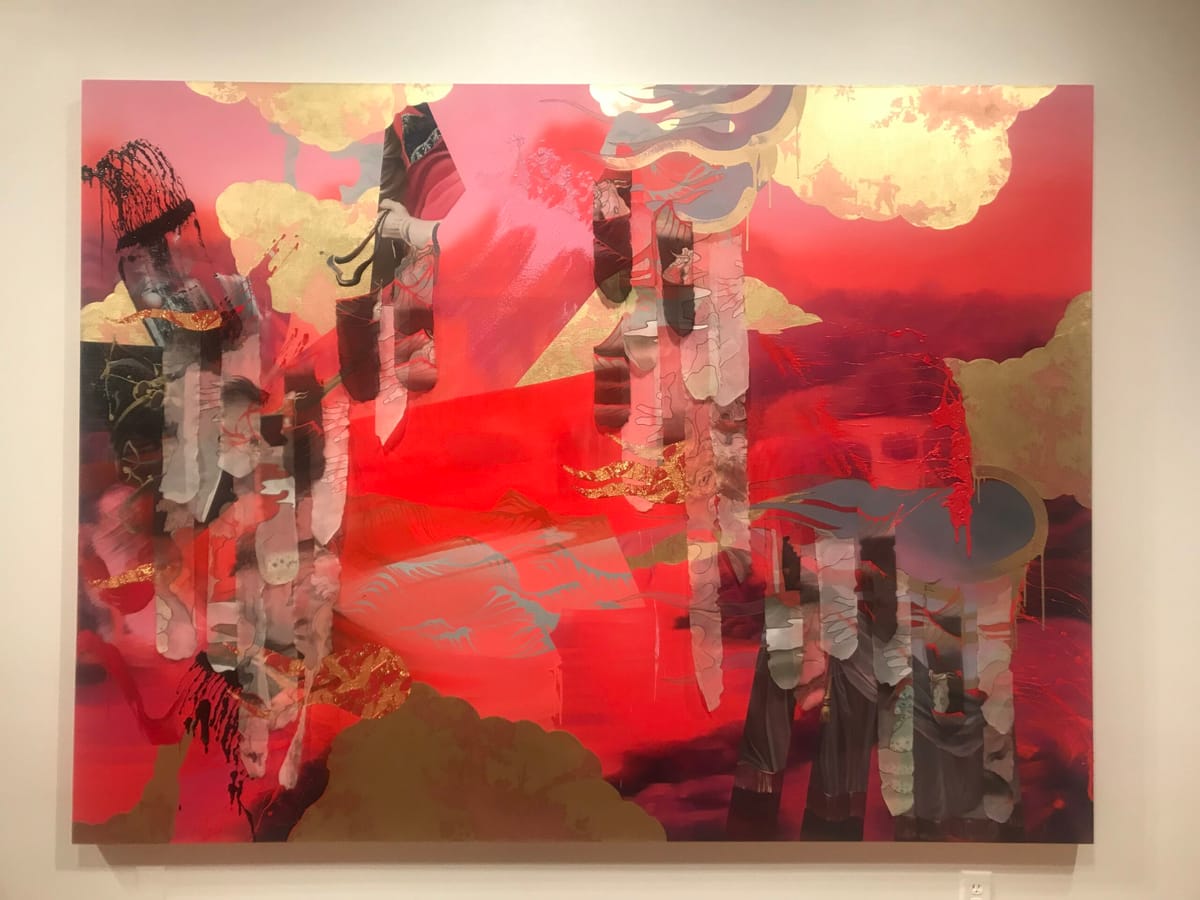Lien Truong’s Art Exhibit Questions Western Narratives

Walking into the Eli Marsh Gallery this fall, visitors will become at once immersed in light, chiming, almost meditative music and works of art heavy in color and content. This initial experience captures the inherent juxtapositions in Lien Truong’s exhibition, “The Sky is Not Sacred,” on display at Fayerweather Hall until Nov. 22. Placing Western narratives of the sky as a “sacred” place next to American aerial bombings of Middle Eastern and Asian countries, Truong draws upon themes of nature and Western imperialism to produce art that, in her words to The Student, “examines the development and substance of our belief systems.”
Cultural intersections and contradictions are evident in both Truong’s artistic process and product: in her mixed-media piece “According to the Specter of Blood and Water,” Truong combines Asian fabric and embroidery, a landscape of her mother’s birthplace in Đà Lạt,Vietnam and a painted fragment of a European monarch. This piece is the first that the viewer comes across and is followed by a collection of much smaller works from Truong’s series “Translatio Imperii.” In this series, Truong paints scenes of American bombings in Asia and the Middle East in the style of the Hudson River Valley School, a mid-19th century American art movement inspired by Romanticism. She uses earthen and muted tones and bathes the landscape in natural light.
From far away, the viewer might mistake the subject as something typical of the Hudson River Valley School, which depicted American landscapes in a pastoral manner and glorified nature; like Transcendentalists, Hudson River Valley painters often turned to nature for divine reflection. To them, as language from Truong’s exhibition put it, nature was indeed “sacred.” It is thus ironic that “Translatio Imperii” uses this artistic style to portray scenes of massive destruction; it is all the more ironic that the same Western hegemony which deified nature would dare to destroy it to such extremes.
“The Sky is Not Sacred,” a single channel video created in collaboration with artist Hồng-Ân Trương, is the show’s namesake artwork. A single channel video is one which uses one electronic source and is exhibited from one playback device. “The Sky is Not Sacred” shows aerial scenes of American aircrafts dropping bombs during the Vietnam War. Meanwhile, an audio recording plays a narration from John Constable, a British Romanticist painter who preceded and inspired the aforementioned Hudson River Valley School. In the recording, Constable reiterates the sky’s sacrality. The viewer hears vocabulary such as “glorious,” “grace,” “admirational” and “investigational,” while she sees wildly discordant scenes of bombs exploding upon contact on Vietnamese earth.
The music is equally disjunctive: it is the calm, meditative consonance that initially drew the viewer into the exhibition. The viewer is therefore forced to confront the irony between Western canon and practice. While she hears peaceful descriptions of nature’s clouds, what she sees onscreen are man-made clouds mushrooming from violent detonation. As such, “The Sky is Not Sacred” — both the individual piece and the exhibition as a whole — challenges not only the “canonical status” of Western art forms but also the objectivity of their narratives for the purpose of history-telling. Truong’s belief in the “illuminating” dimension of art pervades her practice, and “The Sky is Not Sacred” in particular. In an email interview, she said that “art and art history show us how art has been made to create systems of cultural heritage.” To Truong, art is not a stagnant byproduct of culture, but instead a creator of culture; it is something that acts. Truong says we can learn from art by examining how it is “tied directly to the belief systems, mirroring for the most part, the dominant lens of its time.”
“The content of my painting practice examines our belief systems and the cultural hierarchies of written and cultural histories,” Truong noted. This product is a combination of research and artistic practice. “I do specific research on my subject matter and gather contextual information from certain fields that give my work context, then begin working in the studio,” she said. “In the studio, my painting practice drives the aesthetic, formal and conceptual decisions as well.”





Comments ()